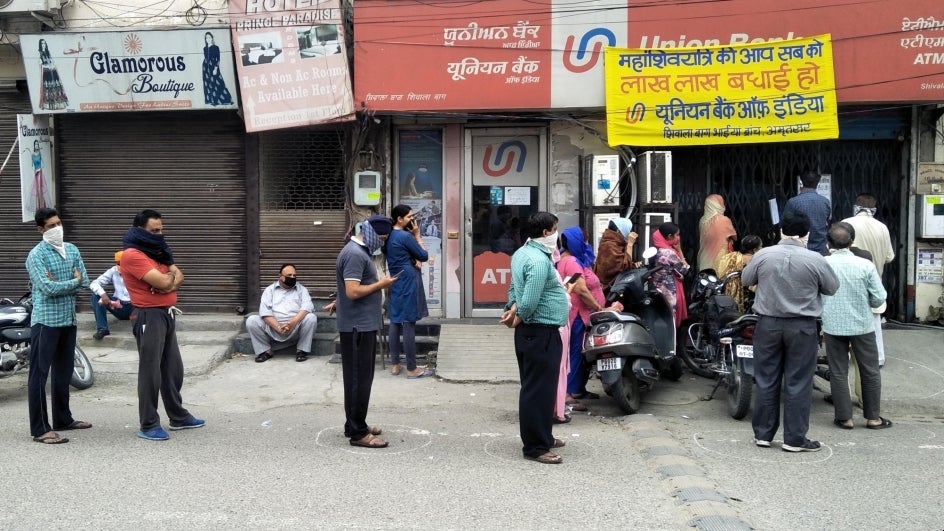Addressing the nation yesterday, Prime Minister Narendra Modi announced a comprehensive economic stimulus package of Rs 20 lakh crores, worth 10% of the country’s GDP whilst simultaneously announcing that Lockdown 4.0 is in the store too. PM Modi said the coming phase would be “totally different” from the previous phases, the contours of which will be decided based on the suggestions given by the states. He had addressed several state CM’s on Monday and after accommodating their suggestions, a nationwide policy is set to be released before May 17—the last day of lockdown 3.0.
What lies ahead in lockdown 4.0? The short answer: restrictions will be lifted but we will have to be more cautious than ever.
To know the long answer, continue reading ahead…
Most likely, the next phase of the lockdown will see the power of making decisions shift from the centre to the states. The state CM’s have been of the purview that autonomy over choosing the desired course of action to combat COVID-19, be granted to them.
Every state has different infection count and a different set of challenges—therefore it makes sense to de-centralize the handling of the pandemic.
The metropolitan cities are the worst hit whilst north-east India and other states like Chhattisgarh, Himachal Pradesh, Uttarakhand, etc. have been largely unscathed and thus having a uniform approach might do more harm than good to these states.
The economy is already stretching thin due to the prolonged lockdown and putting further strain on it by extending a full-lockdown is going to have a far more serious repercussion on society than the virus could ever bring.
In March, India’s industrial production shrunk by a record low of 16.7% on the back of weak manufacturing amid the virus outbreak. The manufacturing output itself slumped 20.6% while the production output of eight core industries shrunk by 6.47%, from 7.1% in the previous month.
Consequently, in Lockdown 4.0–barring containment zones, the economic activities will most certainly resume in other parts of the country that have not been affected by the virus.
According to reports, states have also been asked to explore the tourism possibility and restart the infrastructure work in the orange and green zones, as PM said that European tourism has been badly affected because of the novel coronavirus spread.
While addressing the media, Ministry of Health and Family Welfare Joint Secretary, Lav Agarwal had made a very interesting statement. “We have to learn to live with the virus.”
The country will be opening slowly but the pre-COVID life as we remember it will be a distant memory of the past. Social distancing, needless to say, will be the new normal after restrictions are eased in the country, and people resume their new-normal lives.
And while it would be a far-fetched dream of eradicating the virus in its entirety, given we have not discovered a vaccine yet–living and adjusting with the virus is the only plausible way to go.
Wearing masks at all times, the prohibition of spitting, maintaining social-distancing will be some of the new civic-duties that we as the citizens will have to abide. The government might even come with harsher penalties and jail-terms for those flouting these rules.
The idea of aimlessly loitering around at public places will be discouraged, and even frowned upon. People are unlikely to get out of their houses, except for stocking up on essentials and going for their jobs.
Apart from these, hanging around with friends is something which will perhaps for many, become an extinct idea. Loitering around in malls and shopping complexes will not resume until and unless mass vaccination of COVID-19 is administered to societies
The travel through railways and airplanes will become more stringent in lockdown 4.0. Those symptomatic of the virus will not be allowed to travel.
The Railway ministry has already made it mandatory for passengers taking special trains to have the Aarogya Setu app on their mobile phones—a practice that most likely will be continued.
Centre also indicated that night curfew will stay, as it helps to check the free movement and virus spread.
Still, few delicate reopening decisions like sending students back to class and the opening of offices will require much more deliberation.
It is highly unlikely that the school, colleges will reopen but the office might open with reduced workforce capacity. Only 30 to 40 percent of the workforce might be allowed in the office whilst the rest would have to make do with ‘work from home’.
With increased relaxations, the number of cases too, are bound to increase. Countries like China, South Korea, and Germany, who claimed to have tamed the virus spread, are now witnessing the second wave of infections.
This, after much of the restrictions in such countries, were relieved. India too must be prepared for such outbreaks of the disease from time to time, in the absence of a vaccine.
The lockdown 4.0 might be the dress-rehearsal for the new-normal life that we will have to get accustomed to. The virus will bring about behavioural changes in humans, from maintaining hygiene to the staunch application of social distancing norms, to wearing of facial masks, a lot can be expected to change among humans, even in the absence of a disastrous outbreak.
